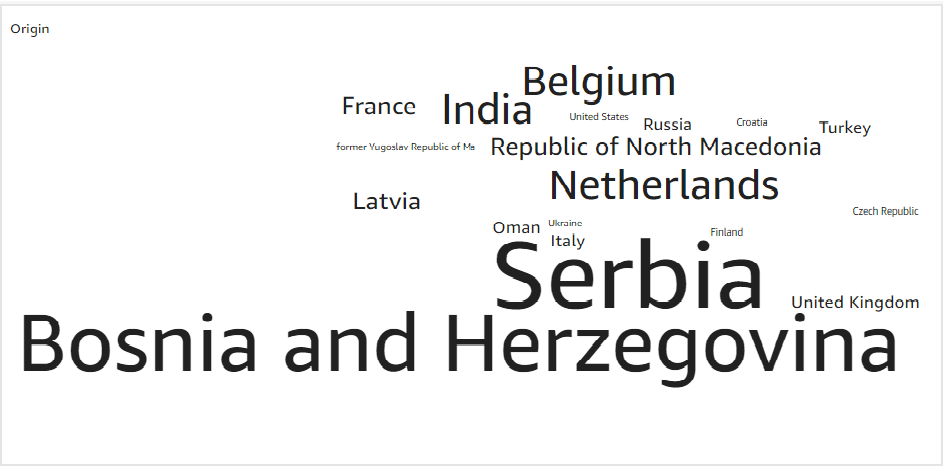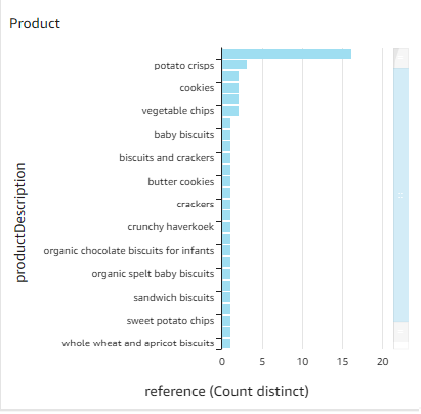Risk of Acrylamide
The European Food safety authority EFSA assesses health risks posed by chemicals in food. Through AI-powered iComplai platform users will be notified on emerging chemical contamination risks like acrylamide or pfas.
What is Acrylamide?
Acrylamide is a chemical that naturally forms in starchy food products during everyday high-temperature cooking. It is a substance that forms through a natural chemical reaction between sugars and asparagine, an amino acid, in plant-based foods – including potato and cereal-grain-based foods. The chemical reaction that causes this is known as the Maillard Reaction.
Acrylamide is a chemical that can form in some foods during high-temperature cooking processes, such as frying, roasting, and baking.
EFSA provides independent scientific advice to risk managers on acrylamide in food. EFSA’s comprehensive assessment of the risks to public health from acrylamide in food was published in 2015.
When Acrylamide was detected?
Acrylamide was first detected in foods in April 2002 although it is likely that it has been present in food since cooking began.
What was the origin of products where Acrylamide was detected?
The origin of the products where acrylamide was detected has been various as you can see below.
Source: European Commission RASFF (Rapid Alert System for Food and Feed) Database, from 2000 to date
Which food contains lot of Acrylamide?
The highest content of acrylamide is found in potato products, such as crisps, potato fritters and French fries, as well as cereal products, such as crispbread, crackers and biscuits. As acrylamide also forms during roasting, coffee is also a relevant source of acrylamide.
Below is the sample list of products where Acrylamide was found .
Source: European Commission RASSF(Rapid Alert System for Food and Feed) Database ,from 2001 to date.
Acrylamide is produced industrially for use in products such as plastics, grouts, water treatment products, and cosmetics. Acrylamide is also found in cigarette smoke.
What are the risks of Acrylamide?
Acrylamide can irritate eyes, and skin and can sensitize the skin to other substances. In quantities which the consumer is never exposed to under normal circumstances, acrylamide can also cause nerve damage.
Currently, studies on human subjects have provided limited and inconsistent evidence of increased risk of developing cancer. However, studies on laboratory animals have shown that exposure to acrylamide through the diet increased the likelihood of developing gene mutations and tumours in various organs.
Based on these animal studies, EFSA’s experts agree with previous evaluations that acrylamide in food potentially increases the risk of developing cancer for consumers in all age groups. While this applies to all consumers, on a body weight basis, children are the most exposed age group.
What is the tolerable limit of Acrylamide intake?
According to German Federal Office of Consumer Protection and Food Safety (BVL) maximum 1000 micrograms per kilogram was determined for food products. If this value is exceeded, the monitoring authorities of each federal state enter into a minimization dialogue with the affected manufacturers. An attempt is then made to reduce the acrylamide concentration by changing the recipe or manufacturing method.
What are the Current Regulations on Acrylamide?
Currently, EU Member States monitor acrylamide levels in food and submit data to EFSA. The European Commission recommends that Member States carry out investigations in cases where the levels of acrylamide in food exceed so-called ‘indicative values’ set by the Commission.
References:
https://www.fda.gov/food/chemical-contaminants-food/acrylamide
https://www.efsa.europa.eu/en/topics/topic/acrylamide
BVL(German Federal Office of Consumer Protection and Food Safety).
Subscribe to our newsletter or reach out to iComplai to learn which other products are potentially contaminated and which risks are emerging for your raw materials.


